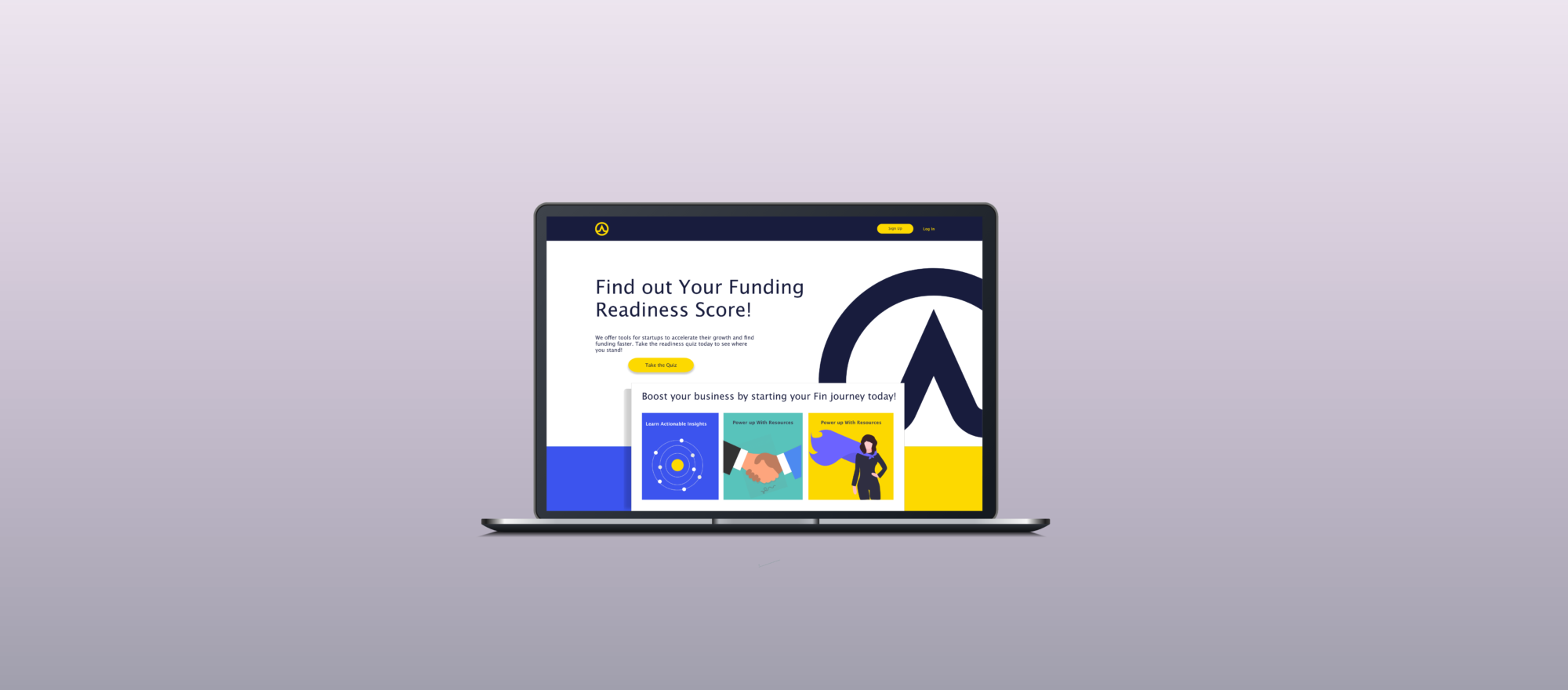


Message Broadcast is a vendor for major utility companies, such as Southern California Edison and Duke Energy. They support high speed omnichannel communications. My role was to design a new platform aimed at increased usability, with improved controls and new features. The outcome was EONS, you can read more on the company site here: https://www.messagebroadcast.com/applications/eons/
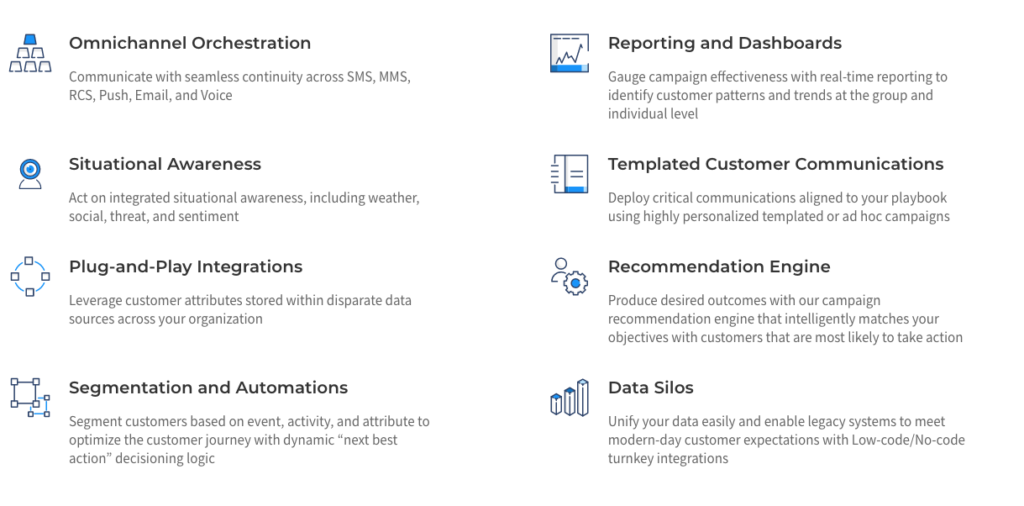


The company had previously built a POC and had a list of features. I had set aside 1 week of full time discovery and spent it in person, collaborating with different stakeholders around the office, doing user tests with the POC, and expanding my knowledge of the utility space. I was the first UX designer they had worked with despite having a team of nearly 20 engineers, so an additional step was explaining the process and deliverables to expect of my sprint cycles. Together, we defined some of our key goals.
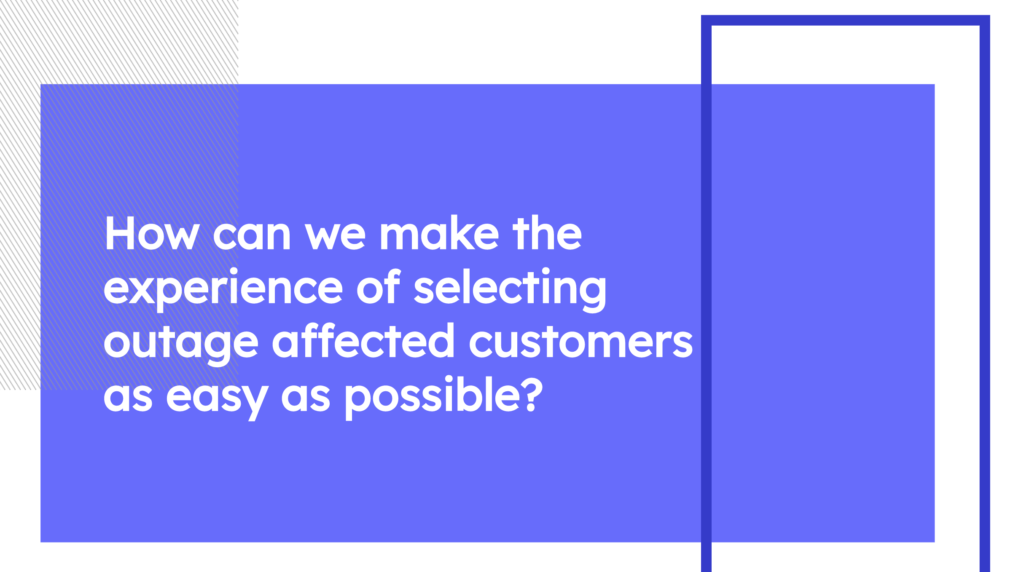


Through user tests, I got clear objective feedback on clear problems with the POC platform. I found that on average, it took users 45 minutes and a lot of confusion to successfully send a campaign.
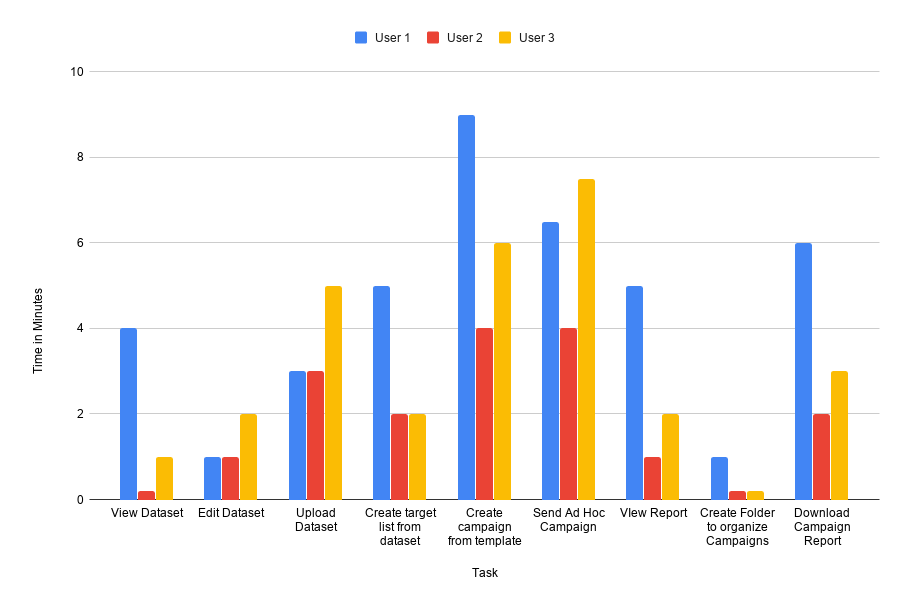


A huge problem was that there were several tasks that a user needed to complete before they could launch their campaign, but there was no obvious flow between the tasks. I outlined problems from the user tests, identified mood, and ultimately outlined the high-level opportunities we had to make an awesome product.
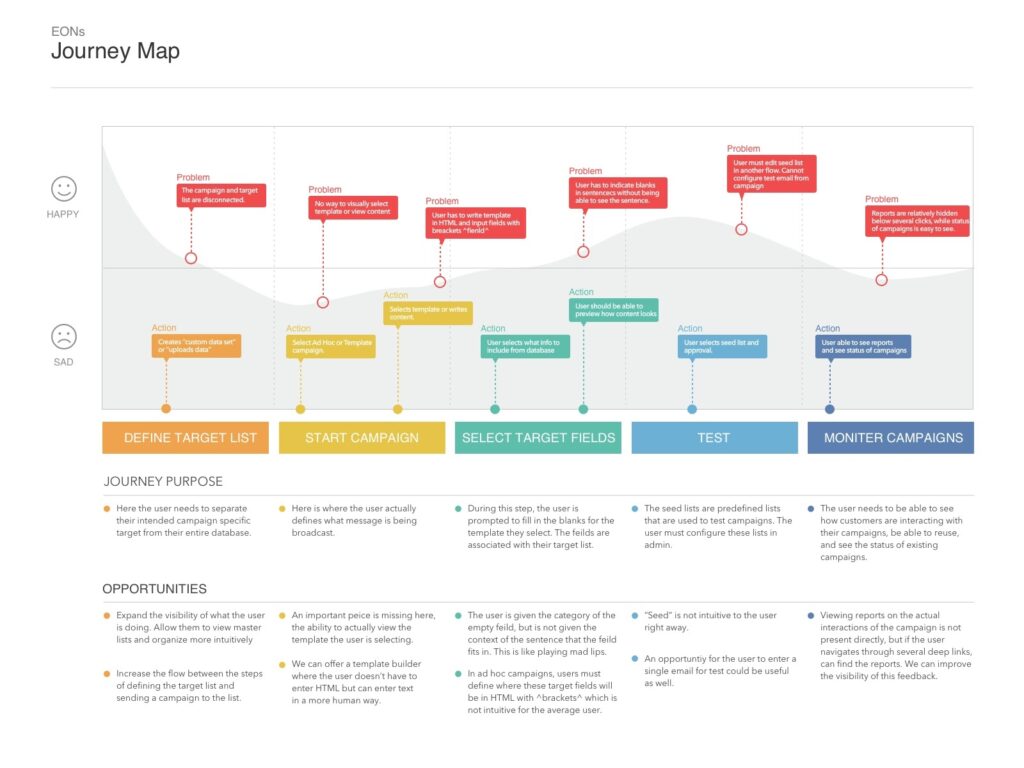


Following defining the product and a series of collaborative ideation workshops with the MB team, I began opening my sketchbook. Each week, I did a design thinking sprint. My schedule was the following:
Monday discovering and listening
Tuesday sketching and ideating
Wednesday-Thursday high fidelity designing
Friday presenting and taking feedback.
Weekend Run user tests
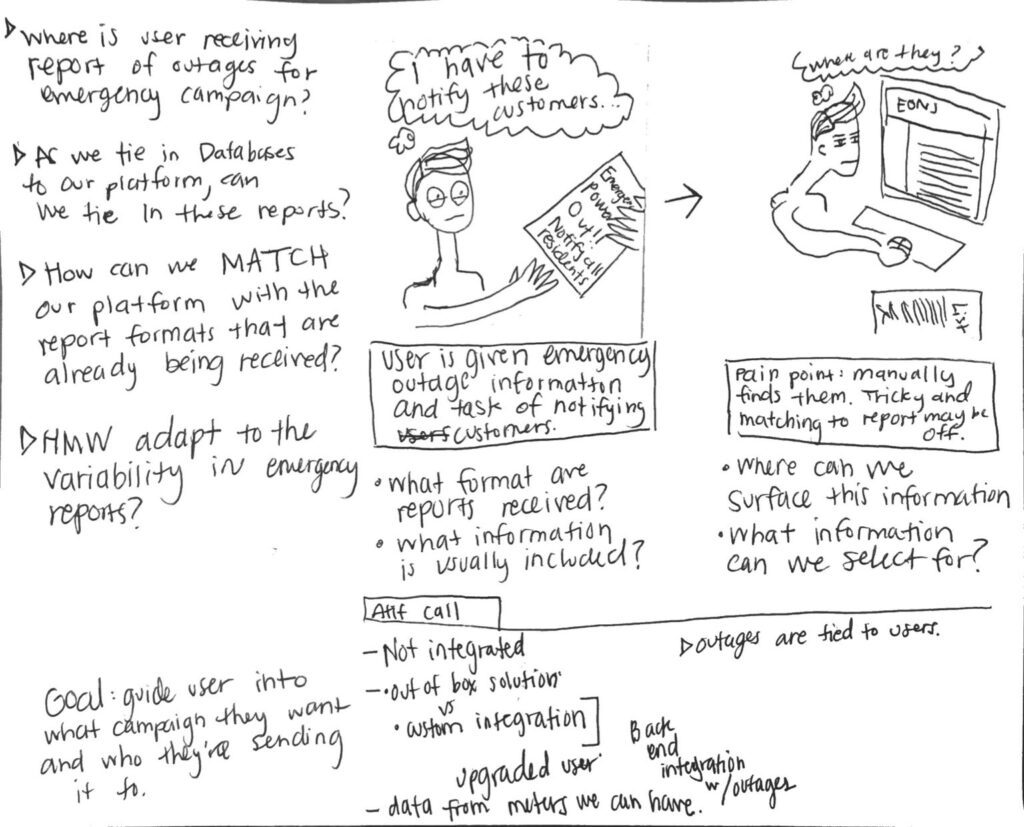


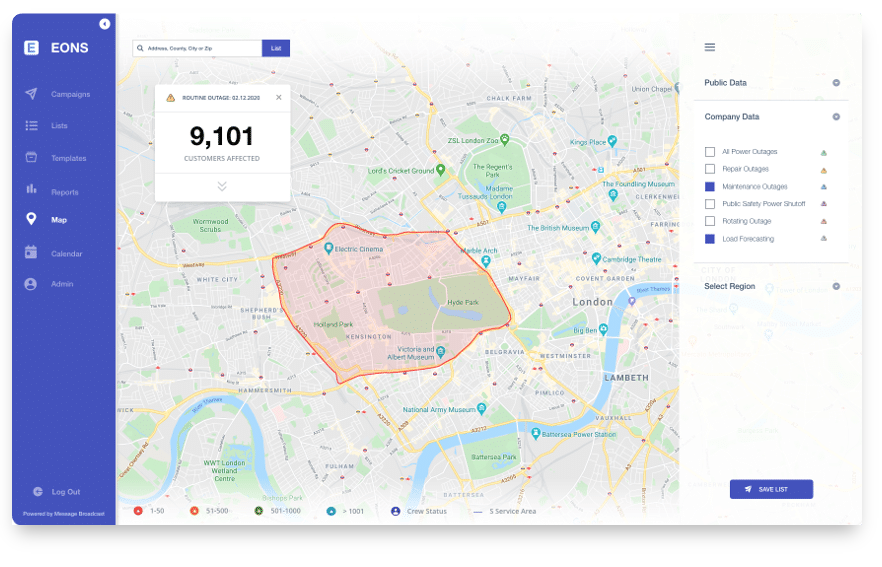


This product was complex with several major user problems to solve. I focused on differnt core features for the product throughout my 5 week sprint, ending with 7 major sections of the product. Each addressed a specific problem to solve for the user. For each I followed design thinking principles. Below are the weeks broken down into feature focuses. Each week the UI overall also increased in fidelity. Each week I ran user tests. Each week I ideated with stakeholders. Each week I presented the new iteration to 10 leadership stakeholders including the top C-level executives.
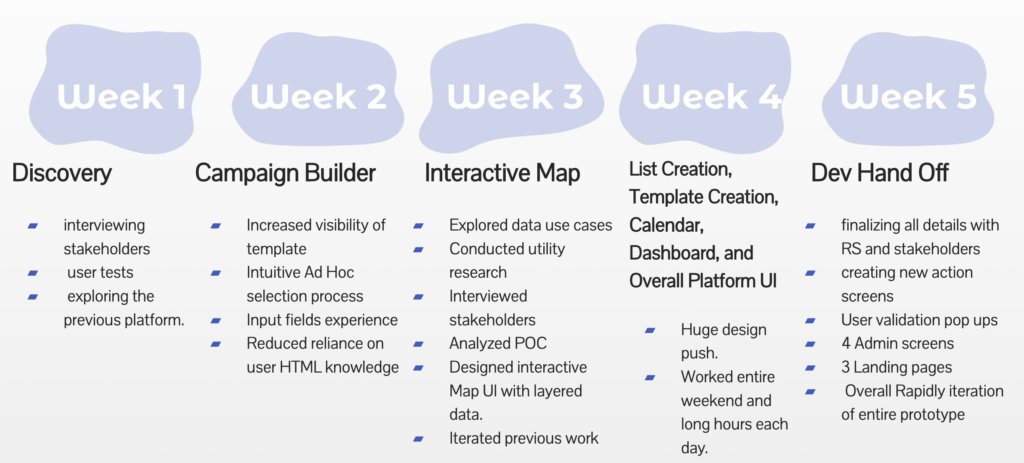


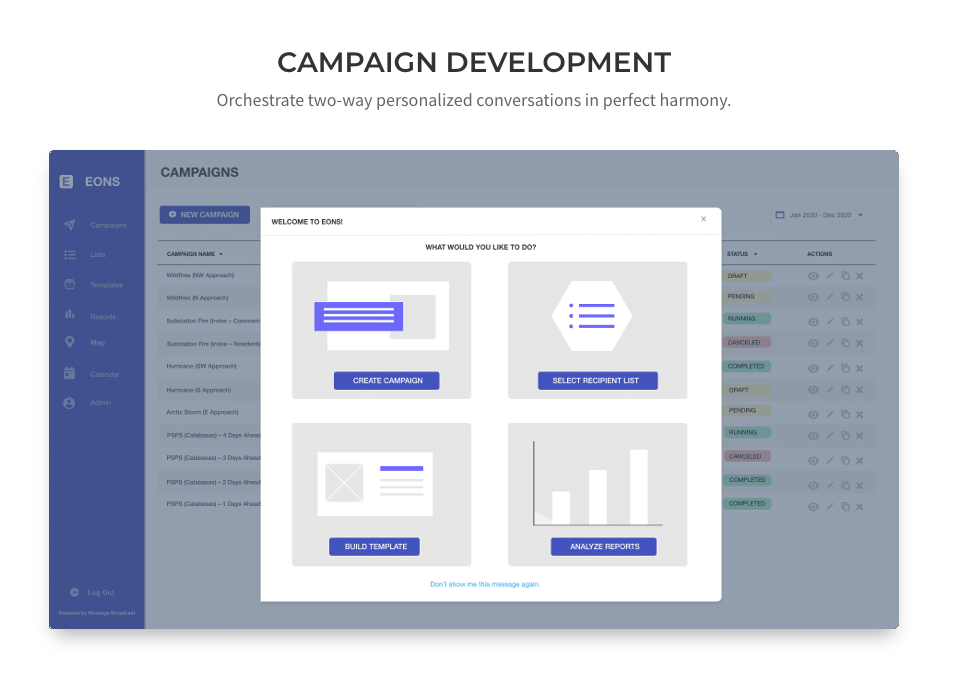


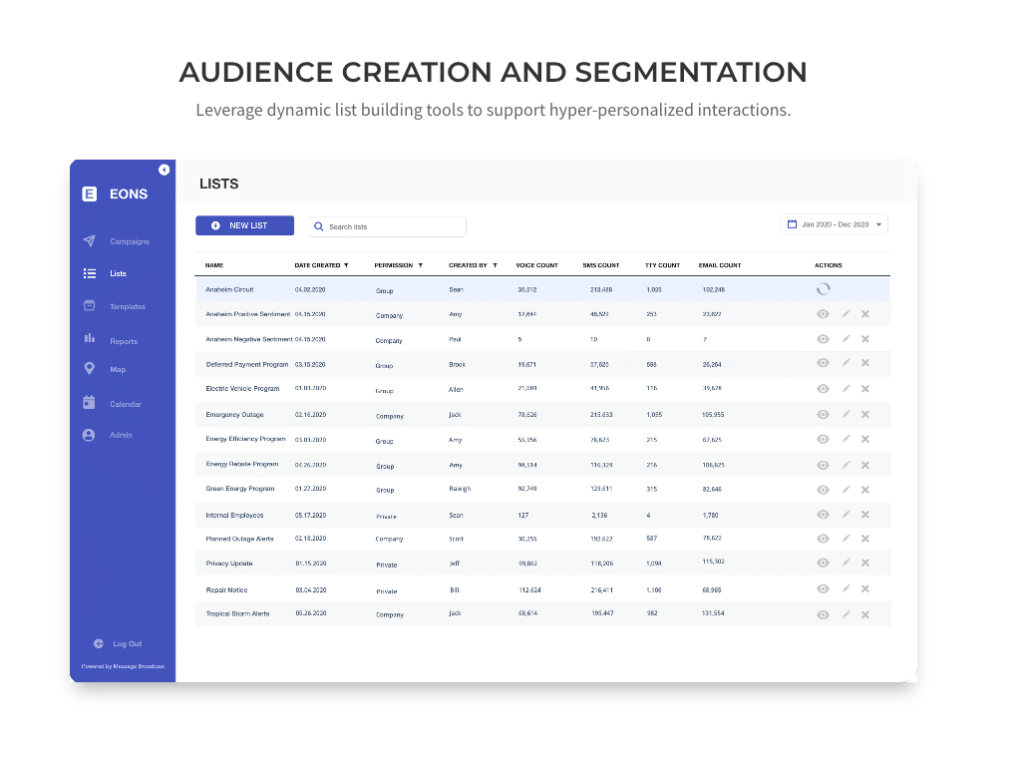


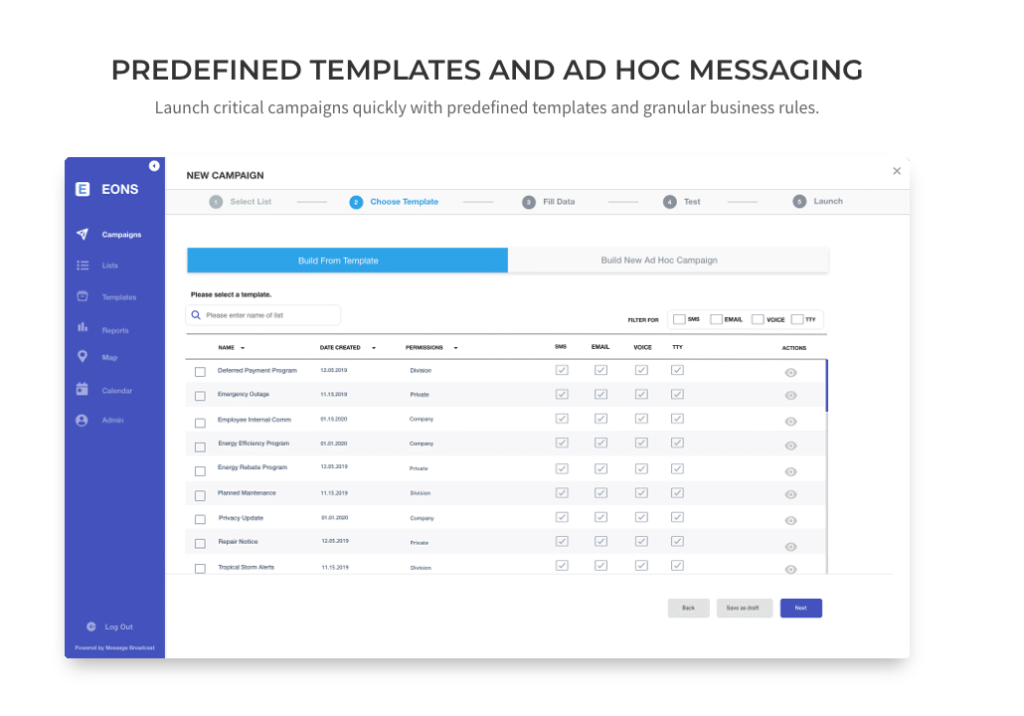


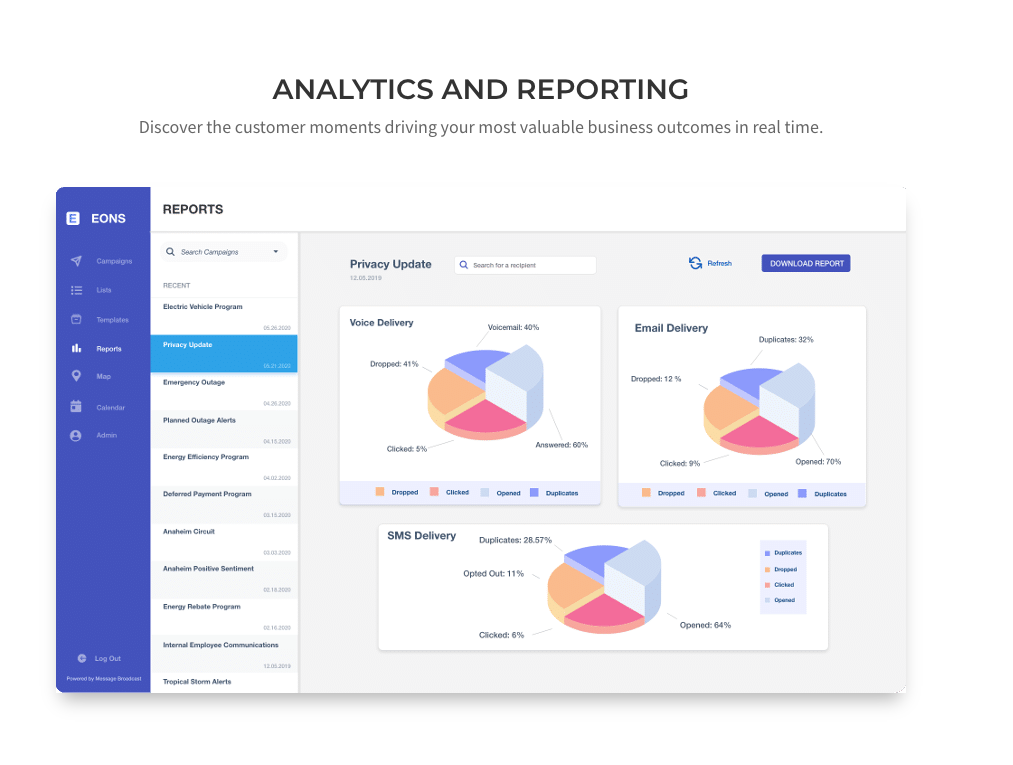


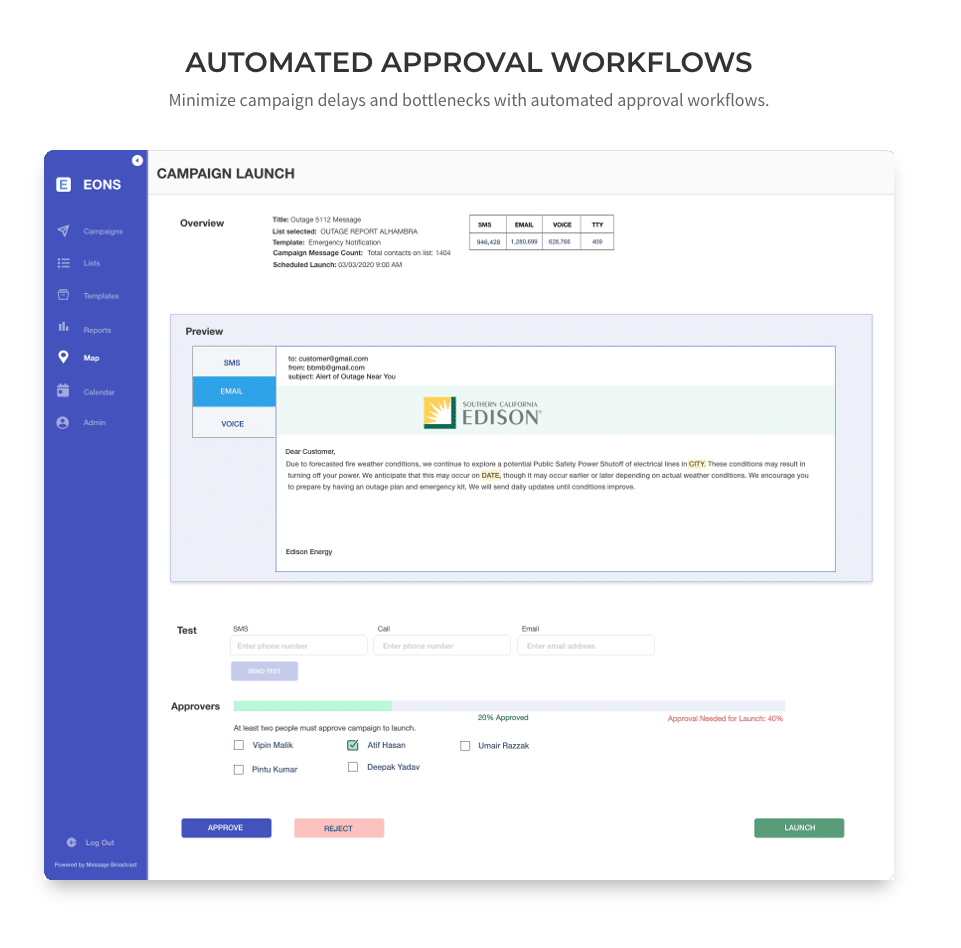


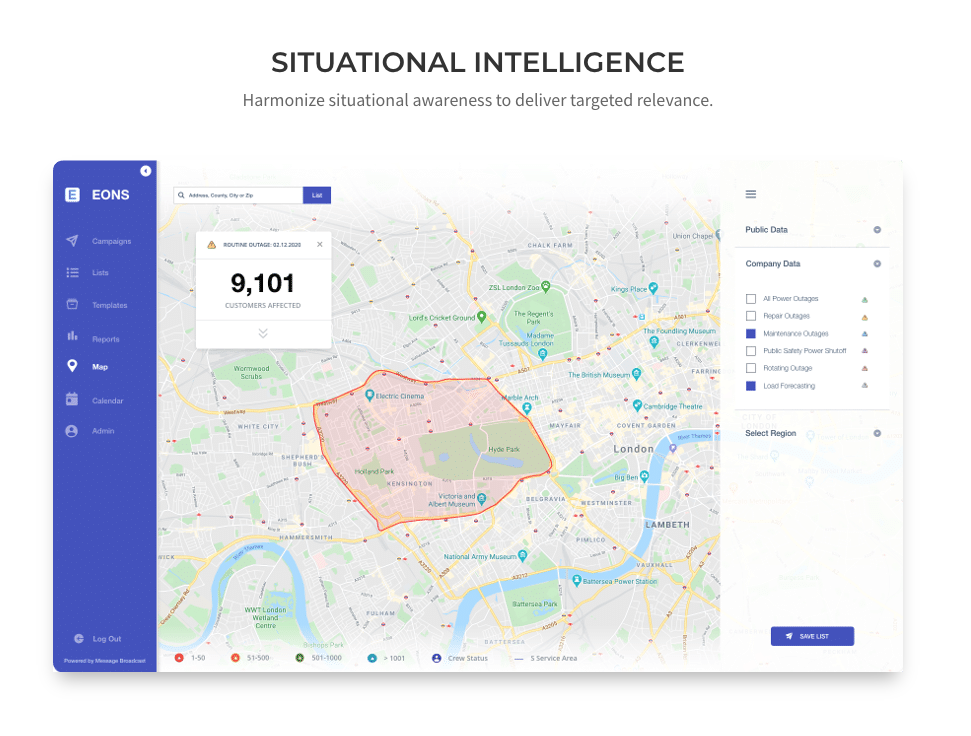


I had been recommended to the organization by the CTO, and he said he had overwhelmingly positive feedback from the team. I received a call from the CEO after the project and he said that he gave me feedback.
“I saw so many people excited and involved. You create this unique environment of structure, yet non-judgemental openness.” - Bill Joiner, CEO
I strongly believe that in order to reach good ideas, you need to create an environment where there are no bad ones. During ideation sessions, I listen and document each idea, followed by a week of exploration and narrowing in on the strongest solution for the defined problem. But it is also one of my strengths to build collaborative atmospheres.
I have gone on to lead several new product initiatives for this company, since completing this campaign builder in early March 2020. I'm excited to grow and learn from their talented leadership team, and keep some of the new friendships that I've formed.
In reflection of this product, I think I could have improved my overall documentation and reports. Most of my work was presented in the form of slide decks. But in new projects my organization skills and documentation have drastically improved. I now write weekly usability reports that are much more robust. This kind of documentation helps preserve the time invested and the research completed in the UX process.

